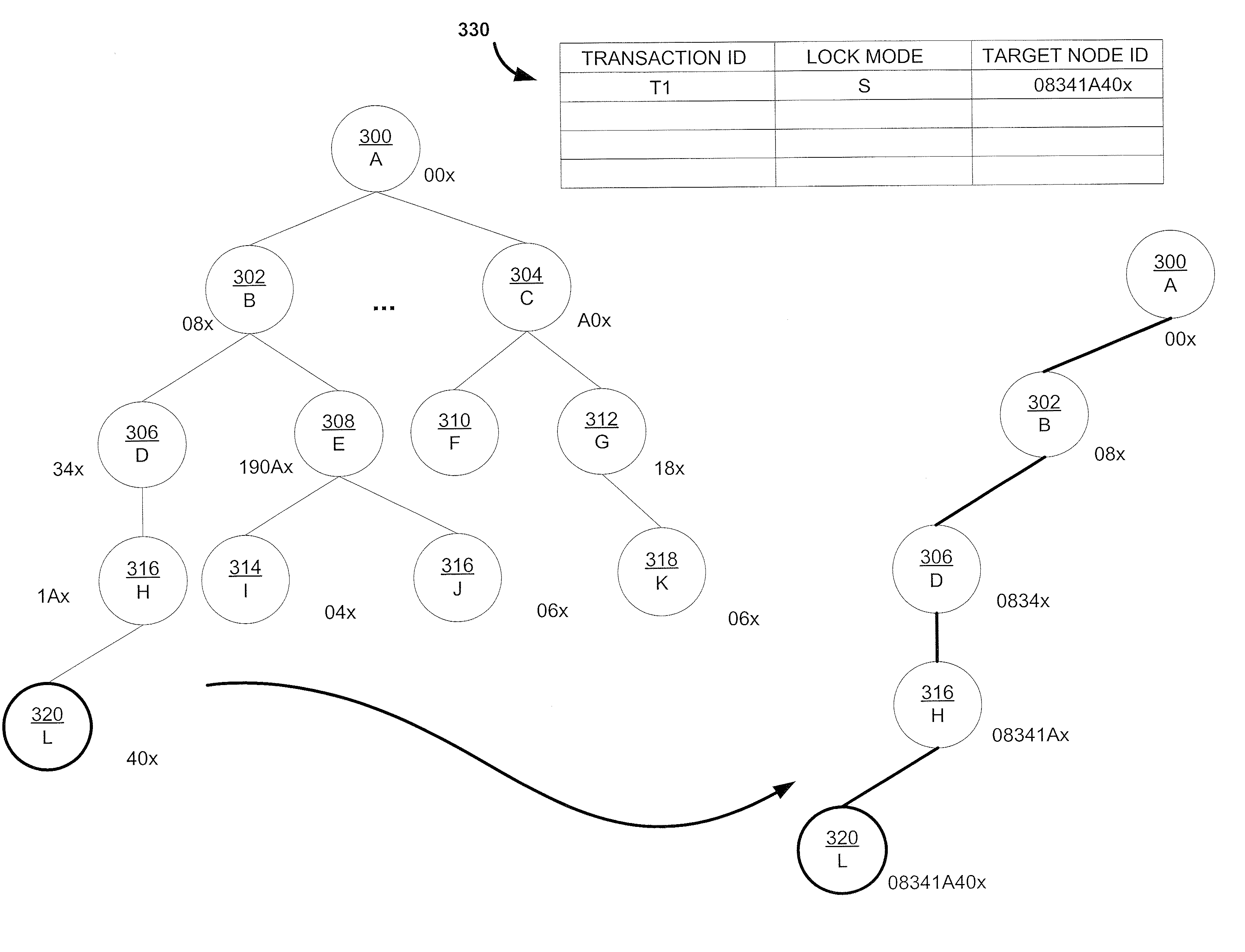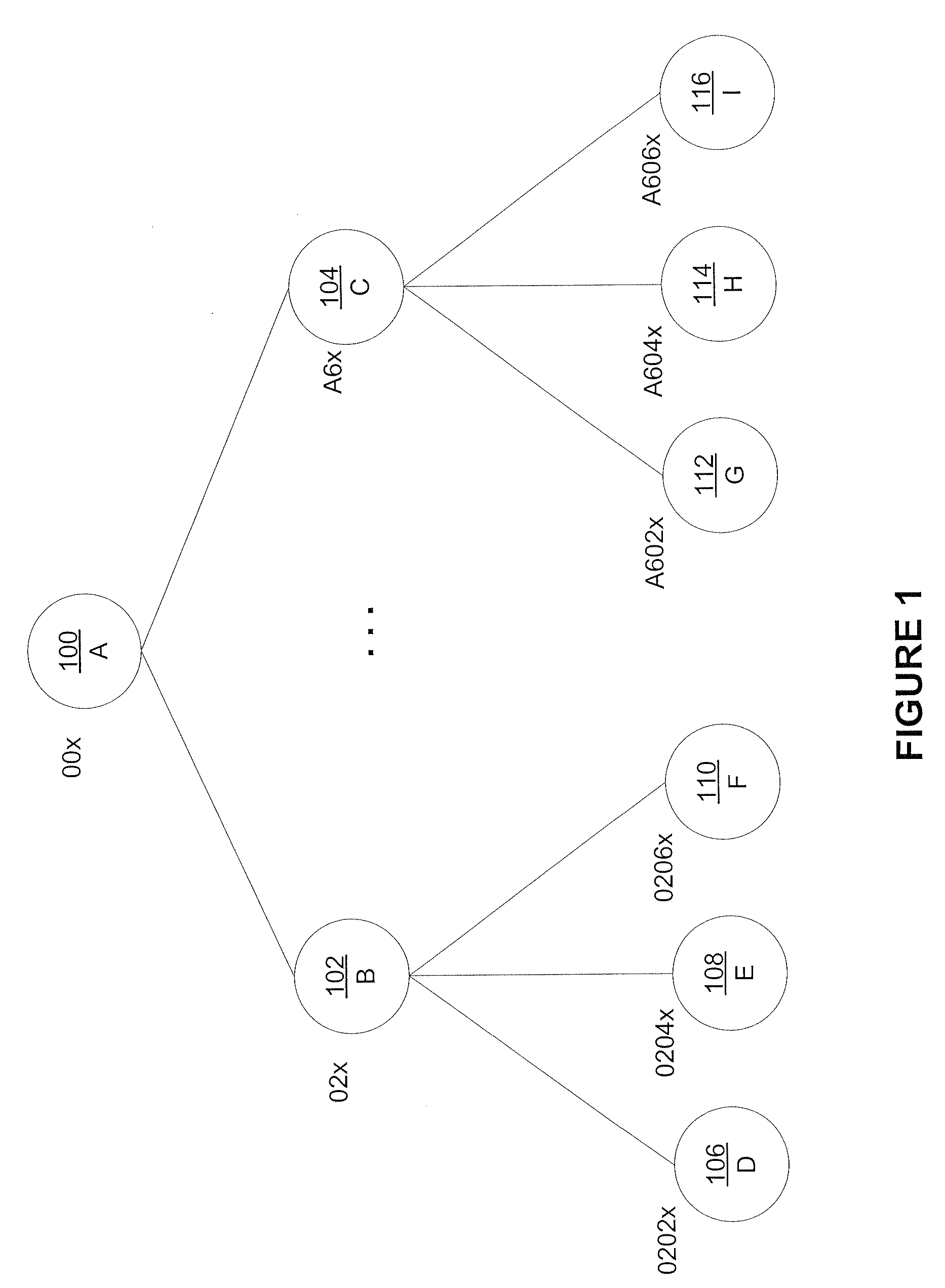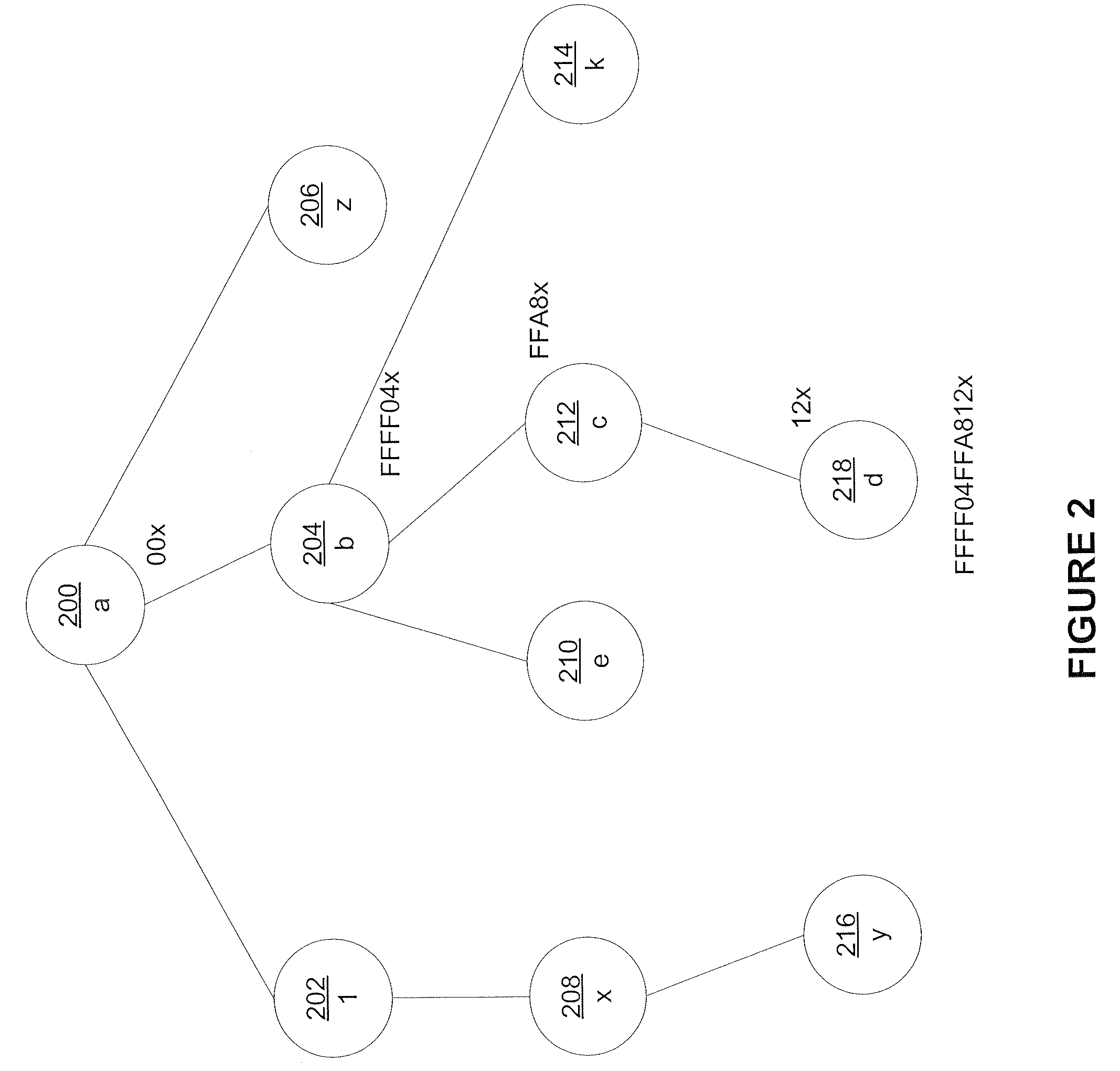An Efficient Locking Protocol for Sub-Document Concurrency Control Using Prefix Encoded Node Identifiers in XML Databases
a concurrency control and locking protocol technology, applied in the field of concurrency control, can solve the problems of inefficient locking of data records corresponding to nodes in the path from root nodes to nodes currently in use via rid, and the limitations of the existing data consistency provisioning techniques of individual data records representing nodes in us
- Summary
- Abstract
- Description
- Claims
- Application Information
AI Technical Summary
Benefits of technology
Problems solved by technology
Method used
Image
Examples
second embodiment
[0040] For example, releasing a lock on node J 316 results in the deletion of logical lock tree node 348 and the modification of logical lock tree nodes 344, 334, and 332. Logical lock tree nodes 344, 334, and 332 have transaction ID fields modified such that transaction T2 locking a node in corresponding IX mode, is deleted. In a preferred embodiment, a node ID segment merge process occurs when locks are released. A node ID segment merge process is the reverse process of a node ID segment split; a merge process allows a reduction in number of explicitly locked node ID segments and improves lock request processing performance. In other embodiments, a logical lock tree remains unchanged. In one embodiment, a lock release process is facilitated by a linked list of nodes locked by a common transaction to speed up the lock release processing. In a second embodiment, if locks are not released simultaneously at the end of a transaction, a count is used to represent the number of lock requ...
first embodiment
[0042] In a first embodiment, each logical node is stored as a physical record, thus there exists a one-to-one mapping between a logical node ID and a physical RID. In this embodiment, prefix encoding for node IDs is stable and does not necessitate an extra storage layout requirement. Logical node IDs are used in a locking protocol of the present invention without mapping or converting to RIDs.
[0043] In a second embodiment, a plurality of logical node representations are grouped within a single physical record. To avoid concurrency issues, a lock request on a target node ID is converted into a lock request on an entire physical record to which a target node belongs. Specifically, a lock request on a target node is converted into a set of lock requests on a set of records that contain ancestor nodes of a target node, along a path from a root node to a target node. Facilitated by a mapping mechanism between node IDs and RIDs as necessarily described for node access; RIDs for records c...
third embodiment
[0045] In a third embodiment, an entire document is stored in a contiguous physical storage unit, such as a single record. To provide for concurrency control, sub-trees stored in contiguous physical storage are mapped to a range of storage identifiers, RIDs, in support of sub-document concurrency.
[0046] Additionally, the present invention provides for an article of manufacture comprising computer readable program code contained within implementing one or more modules to provide concurrency control for hierarchically structured data. Furthermore, the present invention includes a computer program code-based product, which is a storage medium having program code stored therein which can be used to instruct a computer to perform any of the methods associated with the present invention. The computer storage medium includes any of, but is not limited to, the following: CD-ROM, DVD, magnetic tape, optical disc, hard drive, floppy disk, ferroelectric memory, flash memory, ferromagnetic memo...
PUM
 Login to View More
Login to View More Abstract
Description
Claims
Application Information
 Login to View More
Login to View More - R&D
- Intellectual Property
- Life Sciences
- Materials
- Tech Scout
- Unparalleled Data Quality
- Higher Quality Content
- 60% Fewer Hallucinations
Browse by: Latest US Patents, China's latest patents, Technical Efficacy Thesaurus, Application Domain, Technology Topic, Popular Technical Reports.
© 2025 PatSnap. All rights reserved.Legal|Privacy policy|Modern Slavery Act Transparency Statement|Sitemap|About US| Contact US: help@patsnap.com



